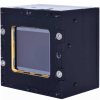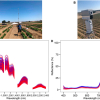Imaging News
Hamamatsu Photonics, a global leader in photonics technology, is proud to announce its 70th anniversary, marking seven decades of achievements and contributions to the world of photonics.
PHOTONIS Group has acquired four companies (Xenics, Proxivision, Telops and Elmul) since December 2022. The worldwide leader in image intensifier tubes, the company has diversified its technologies and product portfolios to become the worldwide leader in detection and imaging technologies. To illustrate that strategy, PHOTONIS GROUP becomes EXOSENS
A new scientific study published in the prestigious international journal "Science Advances" has investigated one of the still poorly understood aspects of cancer, therapy-induced senescence in tumour cells. The study, the result of collaboration among researchers from Politecnico di Milano (Italy), Johns Hopkins University in Baltimore(USA), the National Cancer Institute in Milan (Italy), and the National Research Council (Italy), expands our understanding of cancer biology and paves the way for future therapeutic advancements.
The IrLugX longwave infrared camera core and the IrqLa shortwave infrared camera core, have changed their trade names to Crius and Aion respectively.
Photonis has signed a definitive agreement to acquire Telops, developer and manufacturer of hyperspectral imaging systems and infrared cameras.
Imaging enables screening of samples to be submitted to 14-C dating.
New design has exhibited practical potential for the construction of ultra-compact multispectral and polarised imaging devices without the need of a multi-pass design using complicated spectral filters or mechanically moving parts.
Multispectral imaging makes it possible to visualise certain functional properties of tissue that are invisible to conventional camera systems, such as the blood perfusion status of an organ.
The combination discerns healthy tissue from tumours based on their spectral profiles with higher accuracy than fluorescence-guided surgery alone.
A new paper has reviewed the combination of instrumentation and computational approaches to coherent Raman scattering.
Pictures from a standard RGB camera combined with AI deep learning can provide equivalent crop prediction tools for a fraction of the cost.
A research team from the USA has used hand-held and tower-based equipment for phenotyping common and tepary beans.
The new design uses dual-comb spectroscopy.
WITec GmbH has delivered a new instrument to the Center for Solar Energy and Hydrogen Research (ZSW) Baden-Württemberg.
New method offers high-throughput chemical imaging hundreds of times faster than traditional approach.
A hyperspectral camera has been mounted on a standard OR-approved surgical microscope for in vivo detection of low-grade gliomas.
Work by a group of UConn researchers represents an effort to overcome communication challenges and provide a new framework in the emerging field of land change science.
NTU Singapore has launched the S$160 million Institute for Digital Molecular Analytics and Science, which aims to advance the science behind analysing biomolecules through the use of information technology and data science.
IR s-SNOM has shown that the layer between the wood and varnish of two Stradivarius violins contained protein-based compounds, congregating in nano-sized patches.
A new study has compared three different illumination systems for moisture prediction using hyperspectral imaging in the visible-near infrared range.


















